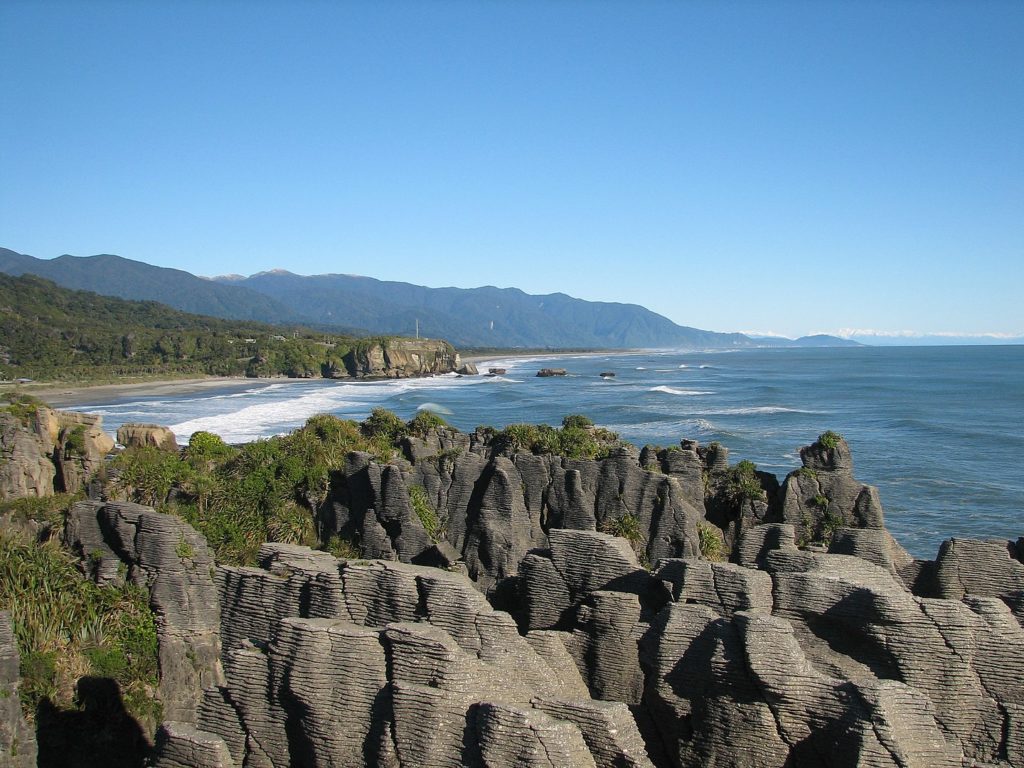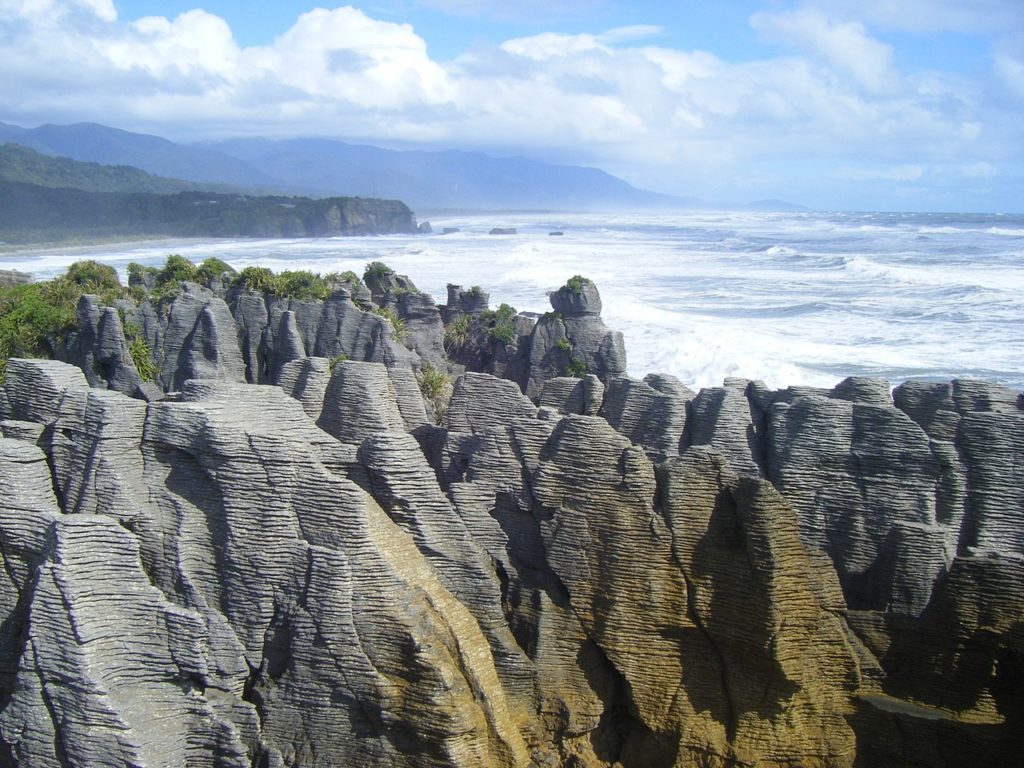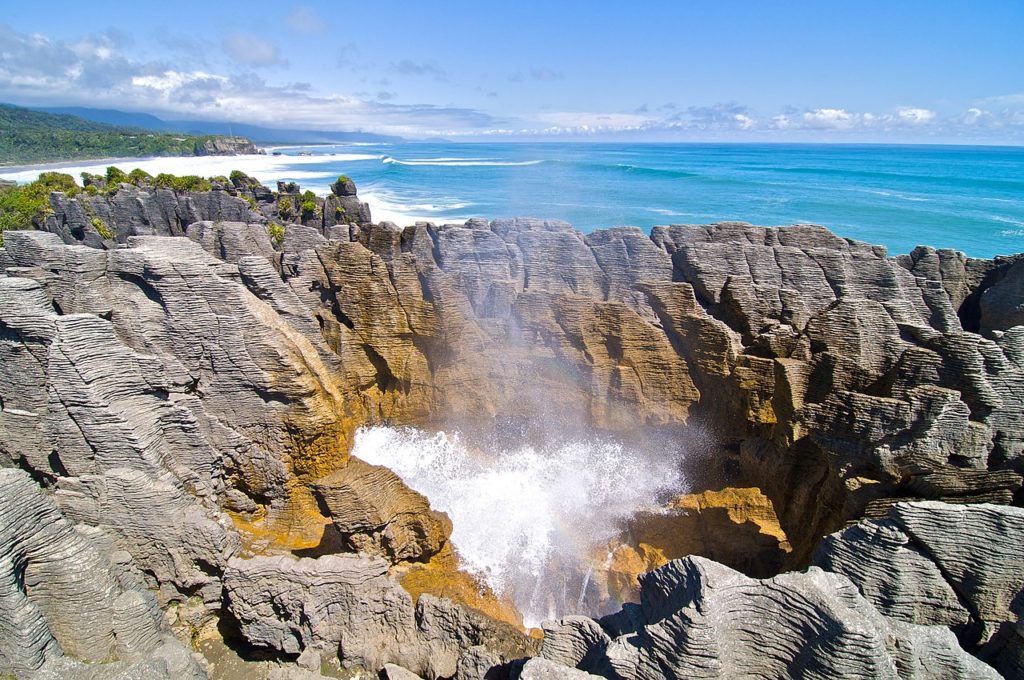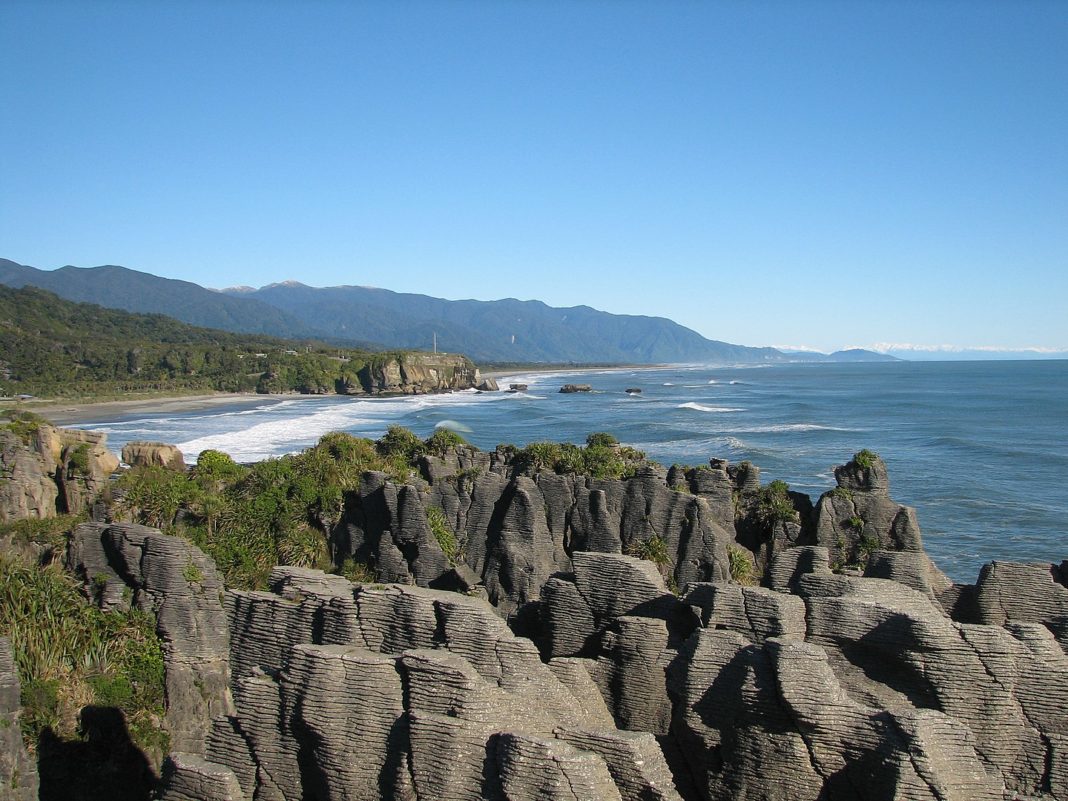The Pancake Rocks are a heavily eroded limestone formation where the sea bursts through several vertical blowholes during incoming swells, particularly at high tide. The limestone was formed in the Oligocene period (around 22–30 million years old), a period in the geological history of New Zealand where most of the continent of Zealandia was submerged beneath shallow seas.

The regular layering that can be observed in the Pancake Rocks results from a process called stylobedding. Under the influence of high pressure and compaction, small imperfections in the calcium carbonate that forms the limestone tend to aggregate in horizontal planes, in a process known as grain boundary diffusion. This leads to regular bands of stronger rock separated by weaker and more erodable mudstone rock. Thousands of years of rain, wind, and spray have mechanically weathered away the surface of the mudstone layers, leaving the limestone layers in relief.

Uplift of the crust is continuing and its recent effects can be seen at Dolomite Point. The flat surface of the headland is in fact an old beach surface, formed at sea level 100,000 years ago and since uplifted by around 35 meters. Patches of beach gravel and sand can be found on the headland.

Today, around high tide, the ocean swells rush headlong through ever-narrowing tunnels and force large amounts of water and compressed air to race upward through the vertical shafts. The result is a hissing, heaving, thumping countryside that rhythmically emits geyser-like plumes of salt water. In a strong westerly swell, this creation of nature is a very impressive sight.

According to the Internet















